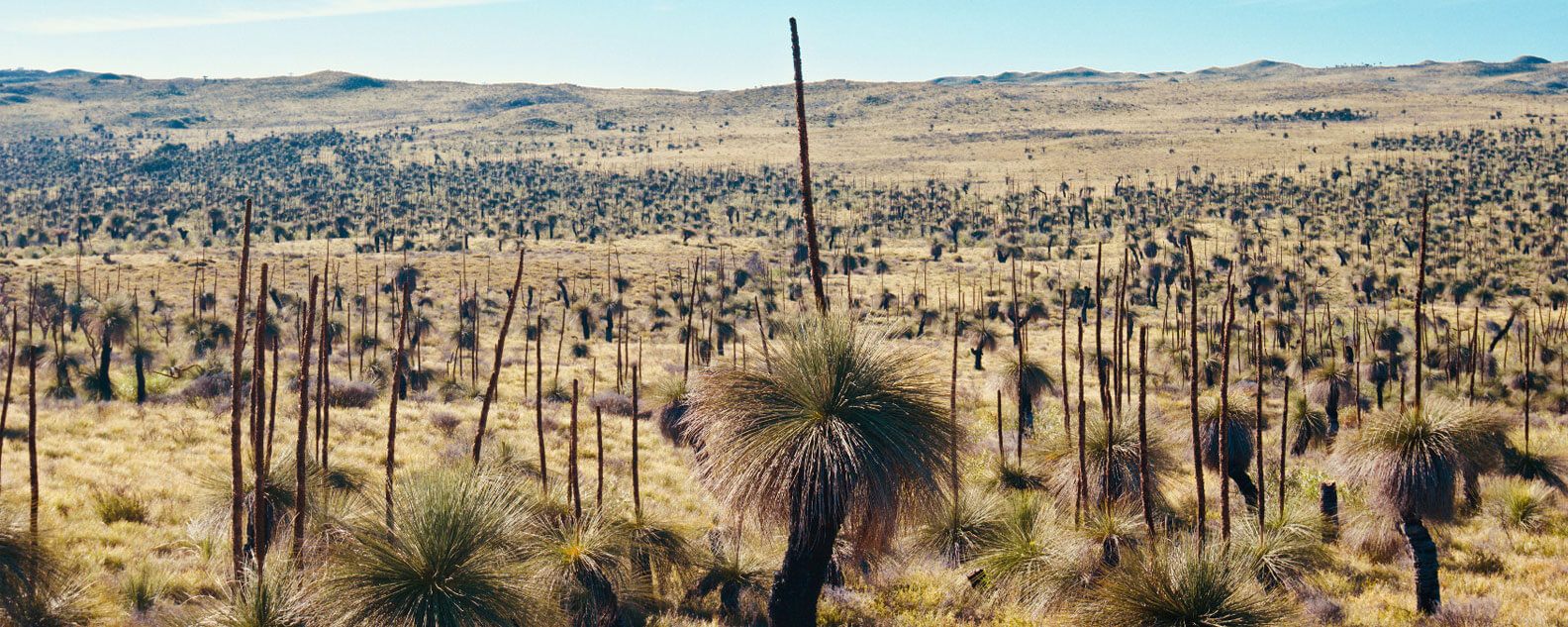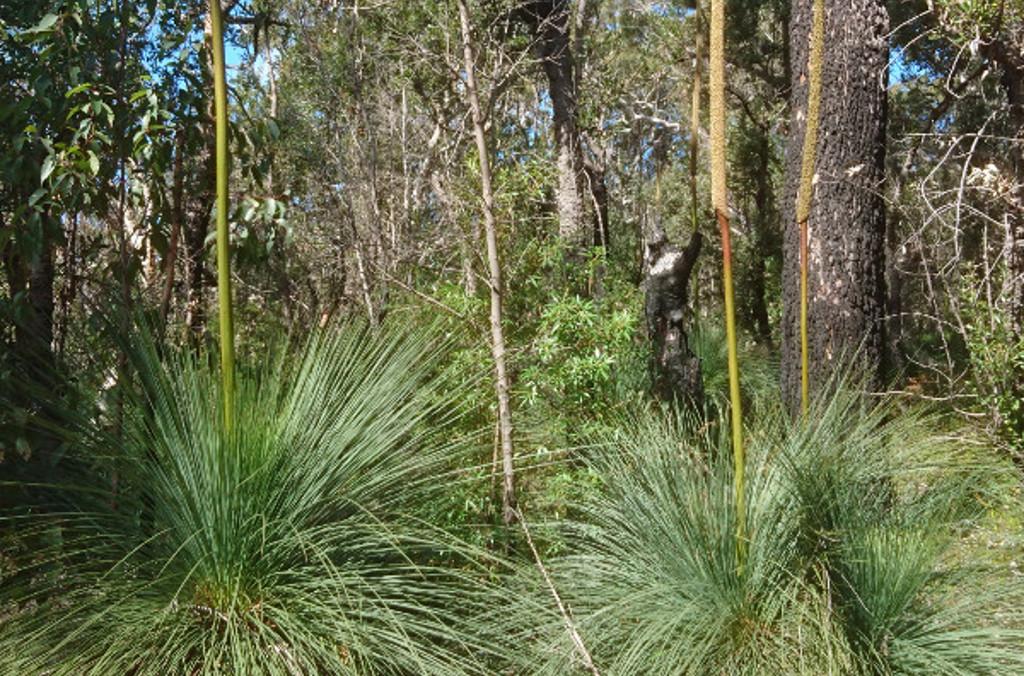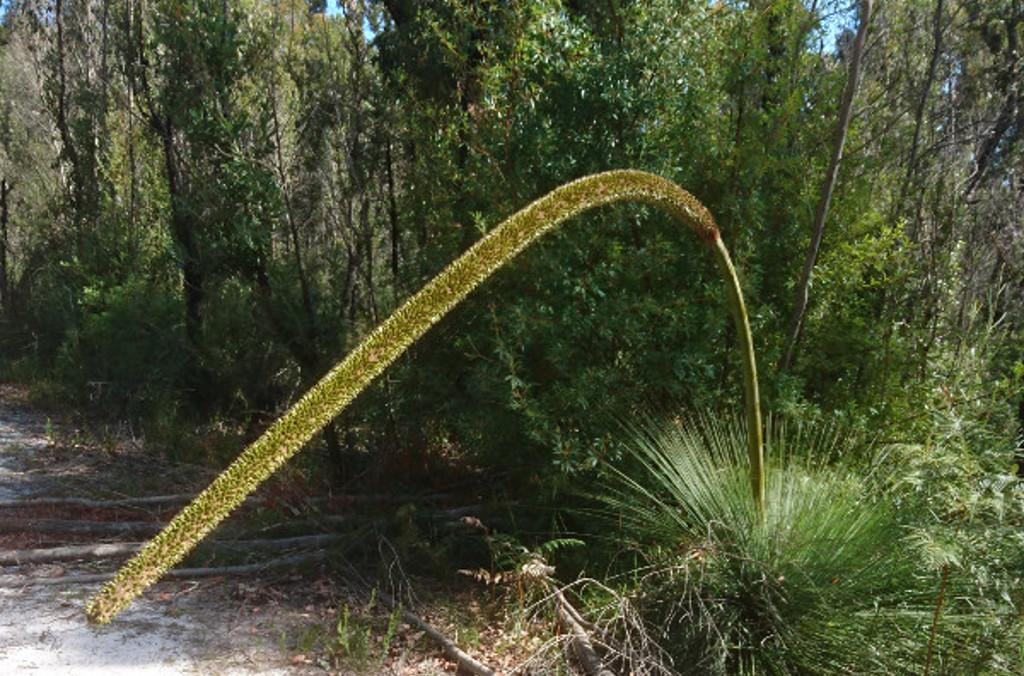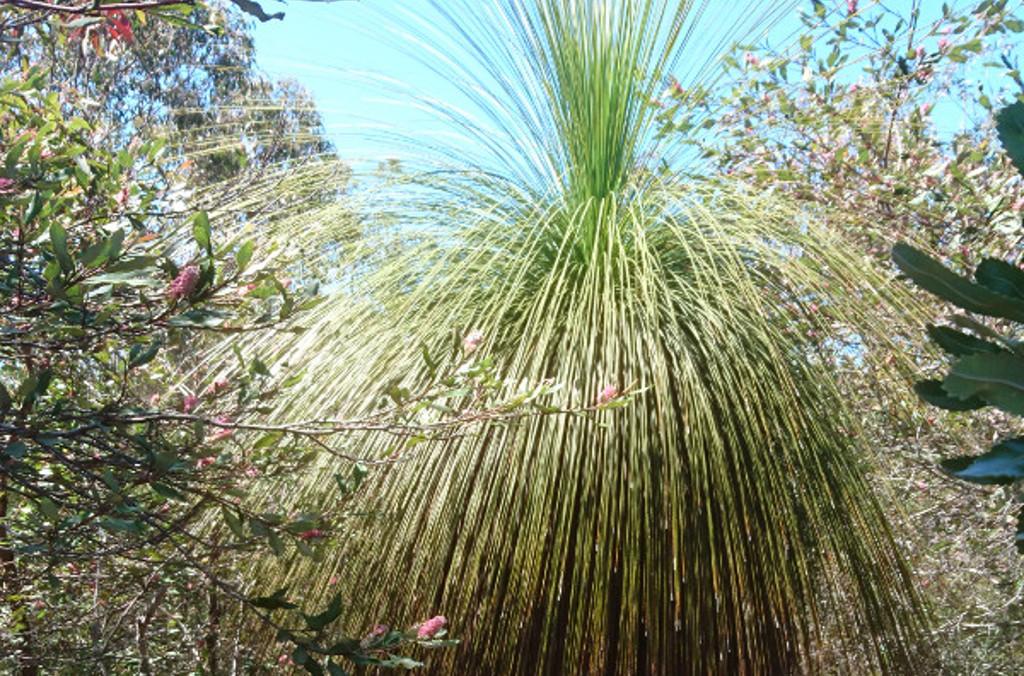The Royal Botanic Garden Sydney didn’t always look the way it does today. Thousands of years ago, it was an area of coastal bushland that belonged to Indigenous Australians of the Gadigal group of the Eora Nation. They called the harbourside area, that is now Sydney CBD and the Garden, ‘Cadi’, which comes from the name for the grass tree in the Cadi language. Grass trees (Xanthorrhoea spp.), are flowering plants found only in Australia and were used by Aboriginal people to make weapons, cutting implements and for food.
Read this story to learn more about the Gadigal.
Grass trees are neither grasses, nor trees, but are distantly related to lilies! Grass trees are found in bushland in all states and territories of Australia.
Grass trees are strong survivors of the Australian bush. The roots of the plant have a friendly relationship with a type of fungi. Because grass trees grow in areas that do not have many nutrients, the fungi help the roots take up water and minerals from the soil. The grass tree is also able to protect itself from fires by having a “skirt” which acts as a shield around the base of the plant. Instead of dropping off, the old leaves droop downwards to create this skirt, which not only protects the plant from fire, but also creates a cosy habitat for native animals. Fire is also important for the grass tree as some species need fire to encourage flowering. A tall flower spike will shoot up from the middle of the plant ready to be pollinated in spring. It can take over 20 years for the flower spike to appear and these spikes can get up to 4m tall.
The flower spike is covered with creamy-white flowers rich in nectar. Birds, insects and mammals are attracted to these flowers, lapping up the nectar and pollinating the flowers. The flowers even provide a home for invertebrates such as green carpenter bees that build nests inside the flower hollows.
The importance of grass trees to Aboriginal Peoples
Aboriginal uses of the grass tree
Activities: Grass Trees – grass or tree?
1. Draw a diagram
Draw a diagram of a grass tree and label the seeds, flower head, trunk, stem and leaves.
Check your answers here.
Explain why it is not a tree or a grass.
2. Play a game and write a story
Watch the video 'Aboriginal uses of Grass Trees' above.
Play the online game matching the different parts of the grass tree to its uses below.
Can you think of other ways you could use different parts of a grass tree?
Write a narrative about your ideas.



